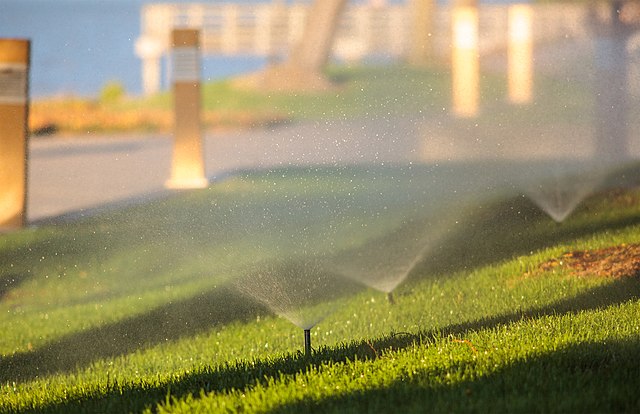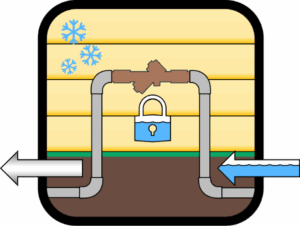
Winterizing your irrigation system is all about stopping the water supply and getting the water out of the pipes so next year your sprinklers work when you need them. The reason we need to do winter prep is because freezing temperatures, particularly freezing water, can cause serious damage to pipe systems and potentially introduce unhealthy pollutants from the soil into our water lines.
 Every irrigation system is different based on your landscape, when it was installed, and with what technology and hardware. There is a good chance your irrigation system was installed long before you moved into your home and there is an even better chance the plumbers didn’t leave you with a convenient cheat sheet on how to maintain it. Now is a great chance to get to know your home’s water system.
Every irrigation system is different based on your landscape, when it was installed, and with what technology and hardware. There is a good chance your irrigation system was installed long before you moved into your home and there is an even better chance the plumbers didn’t leave you with a convenient cheat sheet on how to maintain it. Now is a great chance to get to know your home’s water system.
Do you have a dedicated irrigation meter?
Have you found your main shutoff valve?
Have you found your backflow prevention device?
 When and how your home was built will determine a lot about your system. Old sprinkler systems may not have a dedicated irrigation meter. Previous homeowners with a can-do attitude may have installed the sprinklers themselves and forgot the backflow device that protects the water source. There are lots of online resources that can teach you about where to look and what you’re seeing.
When and how your home was built will determine a lot about your system. Old sprinkler systems may not have a dedicated irrigation meter. Previous homeowners with a can-do attitude may have installed the sprinklers themselves and forgot the backflow device that protects the water source. There are lots of online resources that can teach you about where to look and what you’re seeing.
Isolating the system from the water source is a big part, but what about the water that’s still in the lines? This now unpressurized water still poses a threat to your pipes! Some backflow devices have very convenient places where air can be blown into the lines for them to be drained while some sprinkler systems have a self-drain function.
 Leaving water in the pipes over winter creates the danger of bursting pipes. Broken pipes can be expensive and frustrating work to fix, not to mention can create a muddy swamp in your yard. Those cracks in the pipe can also be a health hazard. Organisms that live in the soil can creep into your water when it isn’t pressurized and work their way up the water line. Ideally you would have valves and backflow control to help prevent this, but in the right conditions, especially in older irrigation lines, those harmful microorganisms could make it to your kitchen sink!
Leaving water in the pipes over winter creates the danger of bursting pipes. Broken pipes can be expensive and frustrating work to fix, not to mention can create a muddy swamp in your yard. Those cracks in the pipe can also be a health hazard. Organisms that live in the soil can creep into your water when it isn’t pressurized and work their way up the water line. Ideally you would have valves and backflow control to help prevent this, but in the right conditions, especially in older irrigation lines, those harmful microorganisms could make it to your kitchen sink!
While it’s likely your irrigation system has different needs than your neighbor’s, consider this quick checklist when winterizing:
- Shut off the main supply of water
- Drain the water from the system
- Protect your backflow preventer
- Power down any automatic controller devices
- Insulate any instruments or above ground pipes that may be most exposed to freezing temperatures
Getting the basics down is a strong start to making it through the winter without hiccups. From here, doing more is for the goal of preparing for spring. What more can you do?
Do your sprinklers and valve boxes get lost under leaves and snow? Put marking flags by them so you don’t have an accident on your first grass mow of the year.
Do you have drains in your yard to catch the excess water? Cover the exit points with a screen so critters don’t crawl in it.
Time and experience will be your greatest teacher, but when in doubt, ask a professional. Or ask the internet. There are many online resources that will teach you how to take care of your system.
